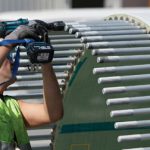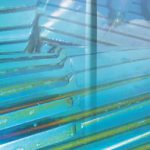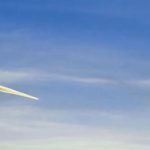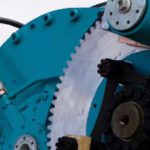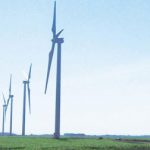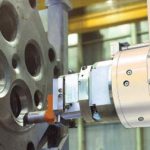The technology used in manufacturing wind turbine blades has evolved over the past 20-plus years. Blade making has migrated toward processes that minimize cycle time and reduce both cost and the probability of defects. Early blade building techniques grew out of the boat building industry, using processes that were high in labor and prone to inconsistencies and defects. Vacuum infusion took blade manufacturing technology to a higher level, with improvements in consistency and performance of a blade. Prepreg—or “pre-impregnated”—technology further enhanced blade performance by combining resins and reinforcements in a more rigorously controlled manner before placement in the blade mold. Today the trend is toward Automated Tape Layup (ATL) or Automated Fiber Placement (AFP) to reduce labor and improve quality, whether one uses dry fiber or prepreg tape (Figure 1).
Input materials in blade production have not evolved as rapidly. Resin technology has expanded somewhat to include both polyester and epoxy on a broad scale. Wood or foam cores are still used in many cases. Skins are comprised of multiaxial fabrics with some use of unidirectional materials. The root end section of the blade is comprised of rovings and/or multiaxial fabrics. Spars have been manufactured with fiberglass rovings and a combination of unidirectional and multiaxial fabrics.
Throughout the early growth of the industry, basic fiberglass reinforcements have changed very little. The pace of that change, however, is now beginning to accelerate.
Performance of turbine blade composite materials has been documented by many agencies and universities, including Sandia National Laboratories and Montana State University in the U.S. and the Optidat database in the Netherlands. Figure 2 outlines these data sources and provides links to some excellent public Web sites. As part of an ongoing DOE project on Wind Blade Manufacturing Innovation (DE-EE0001373) we have collected and analyzed the performance of turbine blade materials and utilized these databases for input into an electronic database. We have also included PPG internal data and publicly available information from different material suppliers.
This data was aggregated and analyzed for performance characteristics based on material type. Detailed analysis of the data shows a basic split in material performance between prepreg and infusion based composites. The highest performance is obtained from unidirectional and biaxial prepreg materials. These materials are utilized on the latest generation of wind turbines. Material properties are more varied in infusion-based composites, particularly as a function of resin selection, reported fiber volume fraction, and material complexity. As fiber orientations shift from unidirectional to biaxial to triaxial, the dominant material characteristic changes as well.
The data contained in these public forums provide a rich body of work for all who take the initiative to explore them. Much credit must go to organizations like Sandia National Labs and their ongoing sponsorship spanning many years of Professor John Mandell and his group at Montana State University. The Wind Center in the Netherlands has also been a leading data provider, as has the Risoe DTU National Laboratory in Denmark. We are able to gain much insight as a result of this work.
The data based on prepreg composites allow us to compare various fiber types as well, including high performance fibers like carbon. The mechanical properties of unidirectional materials when loaded under tension are clearly fiber dominated, which means in the tensile and compressive direction the property of the fiber dominates the composite mechanical property. Specifically, the type of fiber and the amount of fiber determines the performance of the composite material as dictated by the “rule of mixtures” relationship. The advantage of a high performance fiber like carbon is most prevalent in the tensile properties. In the design of a wind blade the advantage of novel fibers like carbon is realized in the tensile direction, and hence is the reason that it is used in parts that undergo high tensile stresses such as a spar cap. In contrast, the compressive properties for carbon fiber reinforced laminates do not differ greatly from cost-effective alternatives like E glass based composites.
The properties of composites based on biaxial fabrics or fiber structures are dominated by the resin when loaded in the primary direction. The use of a high performance fiber does not provide a significant boost in mechanical property values. This is basically a result of moving the fiber orientation away from the load direction. So in using composites fabricated with biaxial fabrics, E glass continues to be a good cost-effective solution for this ply schedule.
The same trends are evident when comparing infusion-based uniaxial and biaxial fiber composites. Once again, higher performance fibers show benefits in uniaxial laminates but not in biaxial laminates. This trend continues in laminates based on triaxial fabrics. In the complex triaxial laminates the improvement in tensile properties is reduced such that there are negligible differences in laminate performance, even when fiber properties are substantially different.
Further reducing the value of high performance fibers in these complex fabric architectures is that other defects can take over. For example, the tensile strength of a fiber is a flaw-dominated property. Damage imparted to the fiber surface in the fabrication of these complex fabrics can reduce the value of the fiber. Since these fabrics are more complex, there is also a higher probability for basic defects (voids) that can compromise the properties. As we move further into more complex fabric architectures, the fiber property difference starts to blur in the performance data given the complexity of the load path, the loss of fiber alignment, and the reduction in effective fiber volume fraction.
Moving from historical data to future developments, the industry is clearly moving toward larger turbines with longer blades. Larger blades produce more energy, and this is a basic target for driving costs down. To grow the size of turbines there are two approaches one can take. Knowing that the deflection of a wind blade is inversely proportional to the moment of inertia of its cross section and the stiffness of the blade material, the goal is to increase moment of inertia or stiffness to reduce deflection. Changing the moment of inertia requires a change of the blade design or blade cross section. This is a design issue best tackled by wind turbine designers and builders, not by material suppliers.
The second option is to change the materials properties to increase flexural stiffness of the composite. From the perspective of the materials supplier, there are a number of ways to accomplish this goal (Figure 3). The first is modification of the sizing chemistry on the surface of the glass fiber. The surface treatment drives wetting, composite tensile strength, and ultimately fatigue life. While these do not affect stiffness directly, they are critical to overall blade performance and durability. Secondly, we can make a stiffer structure by increasing the volume fraction of the fibers within the composite. Another approach is to change the fiber composition to provide a stiffer fiber. Lastly, providing composites with low probability for defects ensures fewer flaws that can become crack initiation sites in the event of large stresses.
Sizing chemistry effects can be illustrated by comparing two PPG products, HYBON 2002 and HYBON 2026. Both products are used in wind energy composites and are multi-compatible in that they perform well in many organic resin systems. HYBON 2002 is a workhorse product for the wind industry, and its performance is well established. An improved sizing chemistry using the same base fiberglass can be demonstrated by comparing properties with HYBON 2026. This product provides improvements in tensile strength, flexural strength, and interfacial shear strength. The value of these improvements is seen more dramatically in dynamic mechanical properties, specifically fatigue performance (Figure 4). In fatigue measurements the improvement of HYBON 2026 over HYBON 20002 translates to roughly 10 percent on a log scale (from ~5.5 to 6.0), and greater than double the absolute number of cycles to failure (320,000 cycles to 1,000,000 cycles). Benefits from sizing chemistry are especially meaningful when one considers that the chemistry is applied at the fiber level at a thickness on the order of 50-100 nanometers. In addition to fatigue performance, the latest generation sizing developments can provide property improvements that are controlled at the fiber level, which improve strength characteristics and strength retention of the composite. However, sizing chemistry does not have a direct effect on fiber stiffness.
The second option to increasing blade stiffness is to change the fiber volume fraction of the composite. Sizing chemistry can play a role here by providing improved wetting and lower resin demand. In general higher volume fraction laminates are more difficult to fabricate, as the permeability of a larger fiber array will be reduced as fiber volume fraction is increased. This can lead to a higher probability of defects. As the laminate approaches the maximum theoretical fiber volume fraction, the likelihood of dry spots and direct fiber-to-fiber contact leads to a higher incidence of flaw generation. Another negative is that the weight of the composite increases as the fiber volume fraction increases, which is something we want to manage when making larger wind blades.
To further explore the increased fiber volume fraction impact, we will consider the case of a hypothetical spar with a circular cross section (Figure 5). Assume for simplicity that it is produced with all the fibers aligned along the length of the spar. The physical dimensions are held constant, as well as the modulus of the fiber. Using a self weight deformation criterion for the analysis we can see that changing the volume fraction from 50-60 percent does provide tip deflection decrease (Figure 6). At the same time, however, there is a respective increase in the mass of our hypothetical spar. Additionally, more-complex fabric architectures are somewhat limited in their ability to achieve these high volume fraction levels. There is room to increase the fiber volume fraction and increase stiffness without incurring fiber-to-fiber contact. However, there is a weight penalty for increasing the fiber volume fraction on a composite laminate.
The third means of improving stiffness is through changes in the basic glass composition. Every glass manufacturer has a space in which they operate, so we must recognize that there are ranges for the resulting properties. E glasses are well known, and most widely used in the composites industry. However, there are other fiber types that offer higher modulus. These are commonly known as R and S type glasses. Carbon is the ultimate fiber based on very high mechanical properties. As modulus increase it must be recognized that this benefit generally comes at a higher cost.
Using the same equation for tip deflection and changing fiber modulus, we see that tip deflection decreases (Figure 7) as modulus increases. Further comparisons of fiber composition can be made when taking fiber volume fraction into account. In this figure the comparison is made between E and R type glasses. One can obtain the same deflection using 50 percent volume fraction of R glass compared to 59 percent for E glass (Figure 8). Furthermore, note that R glass has a 0.23 m tip deflection at 58 percent volume fraction. Volume fraction would need to exceed 60 percent to achieve this deflection with E glass, which is an unlikely scenario. These benefits are driven by fiber modulus, which is on the order of a 10-12 percent change. This can be coupled with an increased fiber volume fraction, which can result in further improvements in laminate stiffness.
The last point of improvement is defect reduction. A number of ongoing current developments are focused in this area. Automation is one means to reduce defects. Current material forms are not adequate for fiber placement and automated tape laying. On the chemistry front, resin specific sizing technology will provide better bonding to the resin and can reduce defects at the micro-scale. There is further value that can be obtained through higher tensile strength, interfacial shear and strength retention properties. This approach can also give greater fatigue performance. Faster processing can also be enhanced through sizing chemistry changes.
In conclusion, the focus has shifted from incremental improvements in performance to performance leaps. Interest in the reduction of defects and in cycle times by the introduction of high-end processes will drive this change. We are working on developing materials that are appropriate for the emerging technologies. Considerable research is ongoing in improving wet-out characteristics of rovings and fabrics and providing higher mechanical property retention over the life of a blade. New technology developments in fiber reinforcements, resin systems, and production concepts will continue to drive wind energy to lower cost of energy levels in the future.
Acknowledgment: This material is partly based upon work supported by the Department of Energy under Award Number(s) [DE-EE0001373)]. Disclaimer: Part of this presentation was prepared as an account of work sponsored by an agency of the United States Government. Neither the United States Government nor any agency thereof, nor any of their employees, makes any warranty, express or implied, or assumes any legal liability or responsibility for the accuracy, completeness, or usefulness of any information, apparatus, product, or process disclosed, or represents that its use would not infringe privately owned rights. Reference herein to any specific commercial product, process, or service by trade name, trademark, manufacturer, or otherwise does not necessarily constitute or imply its endorsement, recommendation, or favoring by the United States Government or any agency thereof. The views and opinions of authors expressed herein do not necessarily state or reflect those of the United States Government or any agency thereof.




















